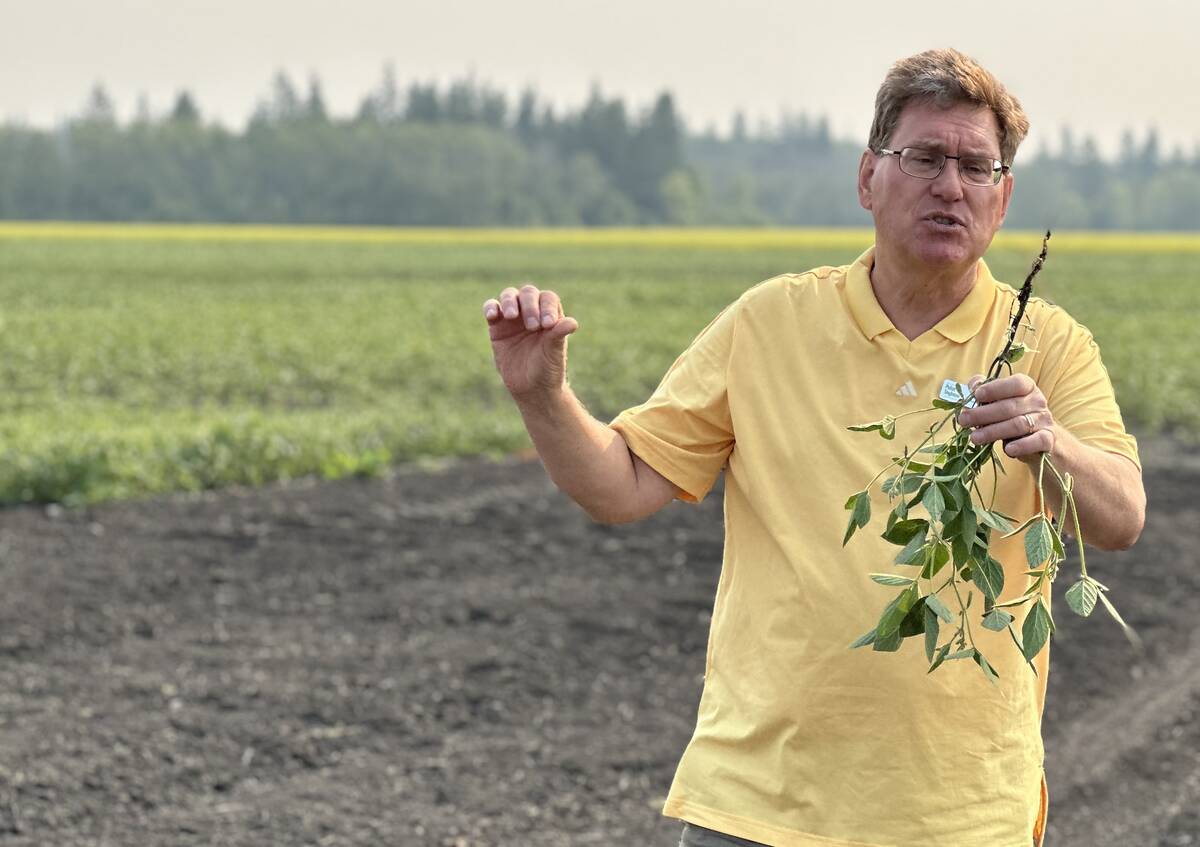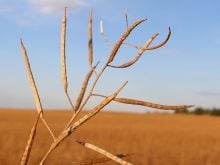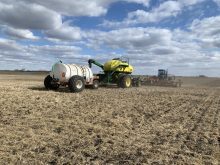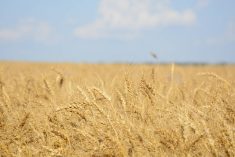Two million unseeded acres | Several parts of the Prairies see fertilizer leach into soggy soil, but southern Alberta needs rain
Excess moisture has prevented a sizable chunk of the eastern and central Prairies from being seeded this year, say analysts.
But the western Prairies need rain, and the overall assessment in central and eastern areas ranges from excellent to concerns about timely herbicide spraying and leaching nutrients.
“We’re probably going to settle in around two million (unseeded) acres, roughly speaking,” said Bruce Burnett, CWB weather and crop specialist.
It is more than the 500,000 acres that went unseeded last year but far less than the five to eight million acres during the floods of a few years ago, he said.
Read Also

Soybeans, peas flag under drought conditions
Manitoba’s pea and soybean acres are suffering in drought-stricken regions like the Interlake. Dry conditions are stressing crops, fuelling pest pressure and slicing yield potential.
Most of this year’s unplanted acres will be in western Manitoba and eastern and central Saskatchewan.
It will affect a mix of crops, but there is one that stands out.
“The intended soybean area probably was hurt proportionately more than some other crops,” said Burnett.
Soybeans are primarily grown in western Manitoba and eastern Sask-atchewan.
Growers intended to plant 1.6 million acres, but Burnett thinks actual plantings will be closer to 1.25 million, which is similar to last year.
It’s a 22 percent reduction from intended acres.
Brian Voth, Agri-Trend senior market adviser, agrees with Burnett’s assessment.
“The number I heard talked about a little bit on one of our conference calls was somewhere in that two million acre range,” he said.
“It would be more than average, but I don’t know if it’s enough to make a huge difference.”
Burnett isn’t overly concerned about the idled two million acres because 53.4 million acres will still be planted to the six major crops.
“At the end of the day, the total acreage doesn’t have nearly the impact that the eventual yield does on total production,” he said.
He is more anxious about crops sitting in soggy soil. Nutrients are leaching down into the ground, and crops are not being sprayed in a timely manner, which can reduce yields.
“The story isn’t done just with how many acres are not going to be planted,” said Burnett.
Voth said yields will be down substantially from last year’s bin-busting crop.
“I would almost lean towards below average.”
He worries crops may lack vital nutrients for growth. Little residual fertilizer was left in the soil after last year’s record crop, and farmers may have scrimped on some nutrients because of high prices. What was applied may be leaching into the soil with all the rain.
A large swath of the grain-growing region from northwestern Alberta to southwestern Manitoba has received excess spring moisture.
It has been particularly soggy in the triangle between Edmonton, Prince Albert, Sask., and Moose Jaw, Sask., where growers have received 150 to 200 percent of normal precipitation between April 1 and June 12.
Cam Dahl, president of Cereals Canada, said a smaller-than-average crop might not be a bad thing if it happens.
“The counter to that is the very, very large carryover that we’re going to have this year,” he said.
“Canada will have wheat to sell and canola to sell and everything else to sell. There’s still a lot of grain in the country.”
Mike Davey, market analyst with FarmLink Marketing Solutions in Alberta, said he has also heard talk of two million abandoned acres.
Growers in many regions have welcomed the moisture and others could still use a soaker, he said.
Almost all of Alberta from Red Deer south is dry, as is southwestern Sask-atchewan. Storms were forecast for that region as of June 16.
Davey has heard few complaints about excess moisture, but growers want prolonged periods of sunshine to kick-start crop growth.
Burnett anticipated a big bump in winter wheat plantings this fall. That happened in previous years when large tracts of land went unseeded.
“We certainly could see a 20 to 30 percent increase on the winter wheat side easily because of these problems,” he said.


















